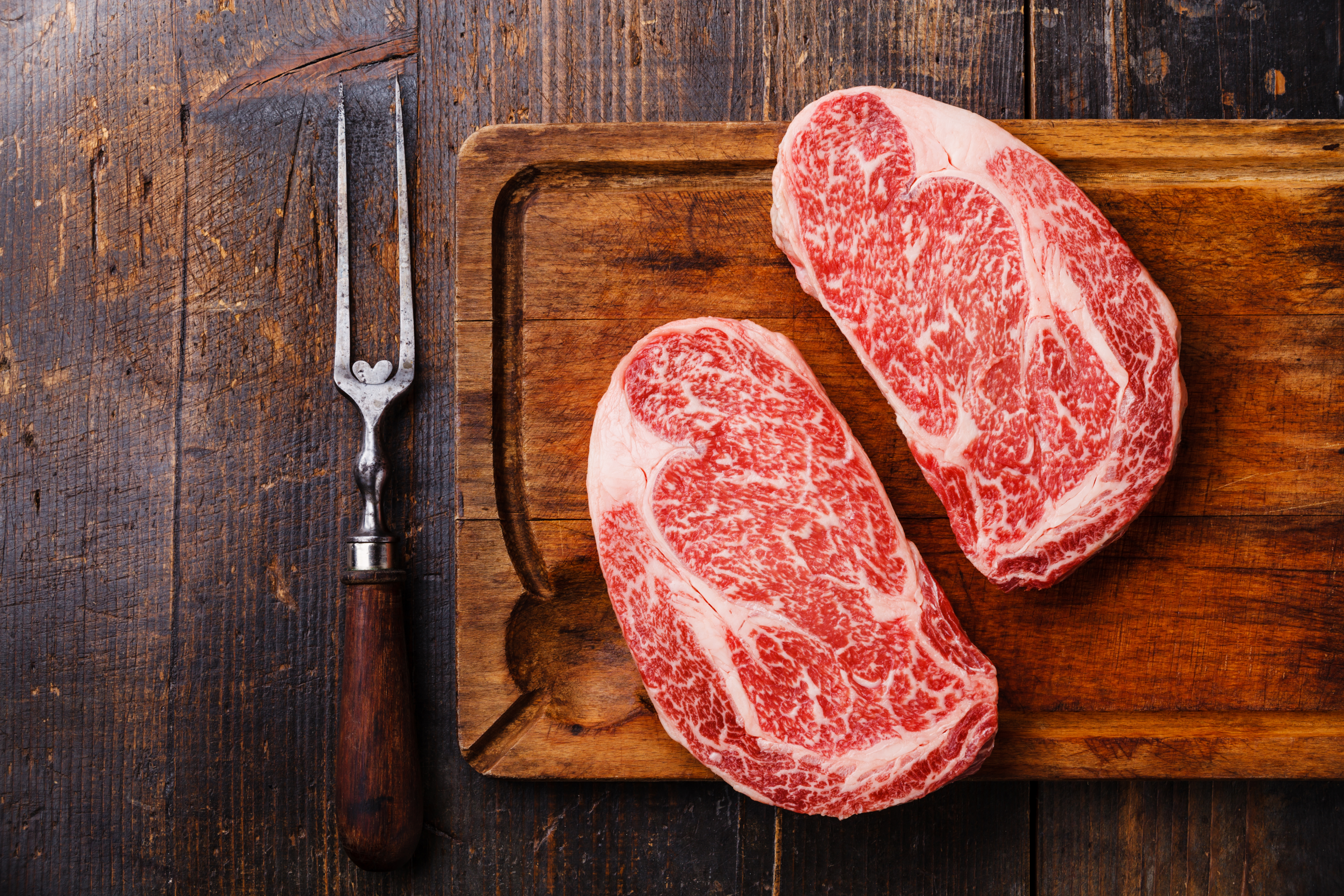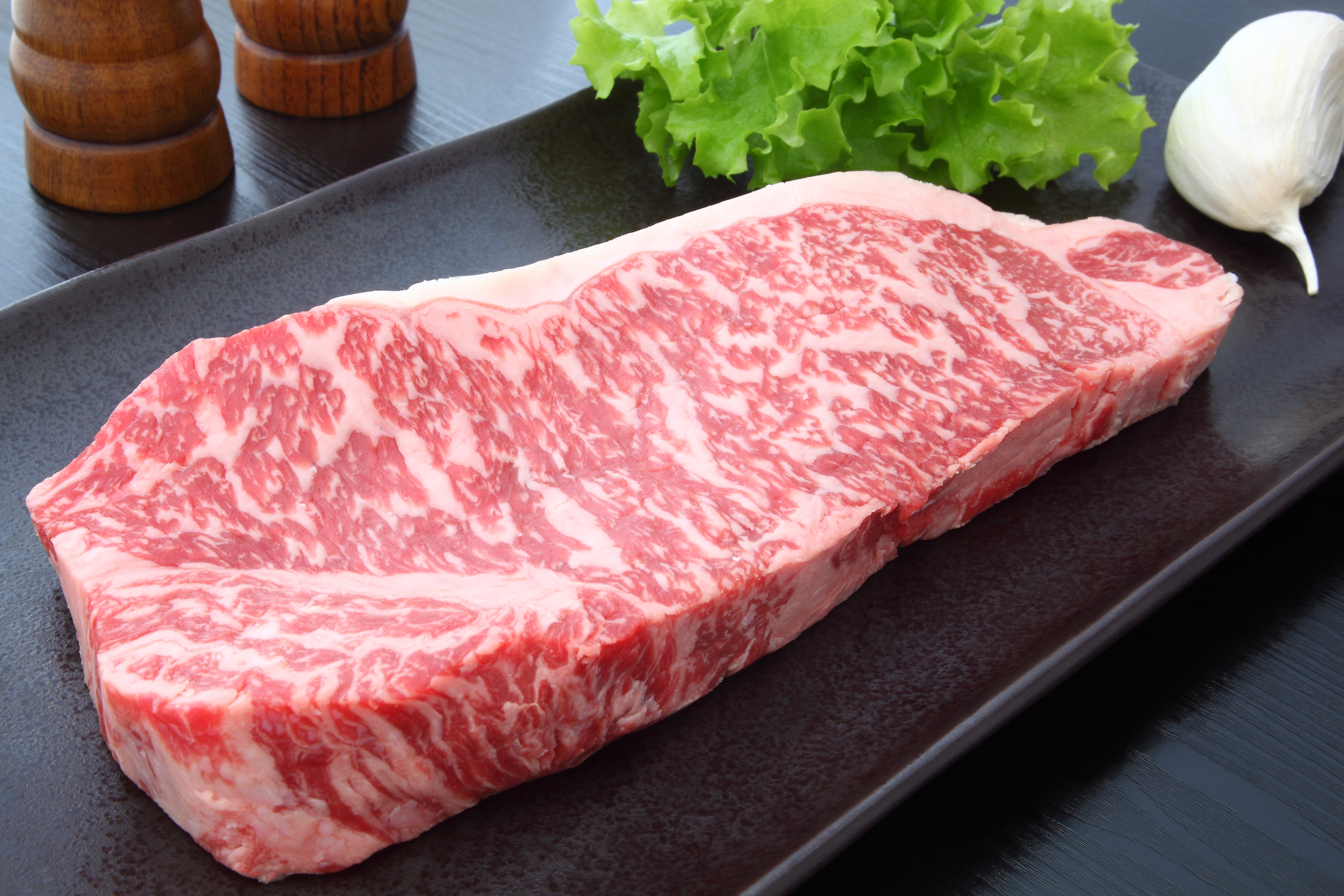Marbling Meat: The Art and Science of Creating Perfectly Tender and Juicy Steaks

If you're a fan of a good steak, you've likely heard the term "marbling" thrown around before. Marbling is the white dots of intramuscular fat that you see within a cut of meat, and it's a significant factor in determining the quality and taste of a steak. But what exactly is marbling, and why does it matter?
Let's explore the art and science of meat marbling and how it can make all the difference in creating the perfect steak.
Table of Contents
-
What is Marbling?
-
Why Does Marbling Matter?
-
Factors That Affect Marbling
-
The Best Cuts of Meat for Marbling
-
How to Choose and Buy Marbled Meat
-
How to Cook Marbled Meat
-
Tips and Tricks for Perfect Results
-
Benefits of Meat Marbling
-
Frequently Asked Questions (FAQs)
-
Conclusion
1. What Is Marbling?

Marbling refers to the white streaks of intramuscular fat you see within a cut of meat, usually beef. This fat is interspersed throughout the muscle tissue, creating a marbled appearance.
The amount and distribution of beef marbling can vary widely depending on the breed, age, and diet.
Generally, beef marbling with a higher degree is considered higher quality, as it tends to be more tender, juicy, and flavorful.
2. Why Does Marbling Matter?
Beef marbling matters because marbling adds flavor, texture, and overall meat quality.
When intermuscular fat is distributed evenly throughout the muscle tissue, it helps to keep the meat moist and juicy during cooking.
It adds flavor and tenderness to the meat as the fat melts and infuses the muscle fibers with moisture and flavor. In short, marbling is a critical factor separating a mediocre steak from an exceptional one.
3. Factors That Affect Marbling
Several factors can affect the degree and quality of marbling in the meat. These include:
-
Breed: Different breeds of cattle have different tendencies to produce marbled flesh. For example, Japanese Wagyu beef cattle are known for their exceptionally high levels of Wagyu beef marbling. Three cattle breeds have higher marbling scores depending on whether it's strictly grass-fed cattle or otherwise.
-
Age: As animals mature, their ability to produce marbling increases. For this reason, meat from older animals tends to develop intramuscular fat more than meat from younger ones. Not to mention whether
-
Diet: The type of diet that an animal eats can have a significant impact on the quality and quantity of marbling in its meat. For example, animals fed a diet rich in grains and other high-energy foods tend to produce meat with more marbling than strictly grass-fed beef from those with a diet of grass and hay.
-
Genetics: An animal's genetic makeup can also play a role in its ability to produce a marbled carcass. Some breeds are more predisposed to making meat with high levels of marbling than others.
4. The Best Cuts of Meat for Marbling
Marbled cuts of meat are created equal. Some cuts naturally have more marbling than others and are therefore considered higher quality. The following cuts are generally considered to be the best for marbling:
-
Ribeye muscle
-
Strip steak
-
Filet mignon
-
Porterhouse
-
T-bone
5. How to Choose and Buy Marbled Beef
When shopping for marbled beef, there are a few things to remember. Look for Wagyu beef evenly marbled throughout, with tiny flecks of intramuscular fat distributed evenly throughout the muscle tissue.
Avoid meat with large pockets of intramuscular fat content or areas where the fat is clumped together. It's one way to tell superior beef apart from poor quality or uneven distribution of this intramuscular fat content. There needs to be only slight marbling.
You should also consider the grade of the meat, as this can be a good indicator of the degree of marbling. The USDA Prime grades give you an idea of what to look for.
The USDA grades beef carcasses based on marbling, age, and muscle development.
USDA Prime beef is the highest grade of beef, known for its high marbling and exceptional quality.
The quality grade includes USDA Choice and USDA Select, which have lower levels of marbling but can still be good quality if selected carefully.
6. How to Cook It
Cooking requires a bit of finesse to get the best results.
The key is to balance the need to render the fat and develop a nice crust on the outside with the need to keep the meat moist and the natural juices flowing.
Here are a few tips for cooking:
-
Start with a high-quality cut of beef that is well-marbled.
-
Let the meat come to room temperature before cooking to ensure even cooking.
-
Preheat your grill or skillet to high heat to develop a nice crust on the outside of the meat.
-
Cook the meat over high heat for a short period, then lower the heat and continue cooking until it reaches your desired level of doneness.
-
Allow the meat to rest for a few minutes before slicing to allow the natural juices to redistribute.
7. Tips and Tricks for Perfect Results
If you want to take your marbling game to the next level, here are a few tips and tricks to keep in mind:
-
Choose meat from high-quality breeds that are known for producing marbled carcasses.
-
Look for meat that has been aged for a time, as this can help enhance the flavor and tenderness of the meat.
-
When cooking, use a meat thermometer to ensure the meat reaches the desired temperature without overcooking it.
-
Experiment with different cooking methods, such as sous vide or slow roasting, to see how they affect the marbling and texture of the meat.
-
Feel free to try different cuts of meat to see which ones work best for your tastes and cooking style.
8. Benefits
The benefits of meat marbling are clear: it adds flavor, tenderness, and juiciness to the meat, making it a more enjoyable and satisfying meal.
In addition, marbled beef is often of higher quality and can be a good indicator of the care and attention that goes into raising and preparing the meat.
Conclusion
Marbling is a vital factor in the quality and taste of meat, particularly when it comes to steaks.
By understanding the science behind marbling and how to choose and cook marbled flesh, you can create a delicious and satisfying meal that will envy your friends and family.
So the next time you're in the market for a good steak, pay attention to the marbling and choose wisely. Your taste buds will thank you!
;)
;)
